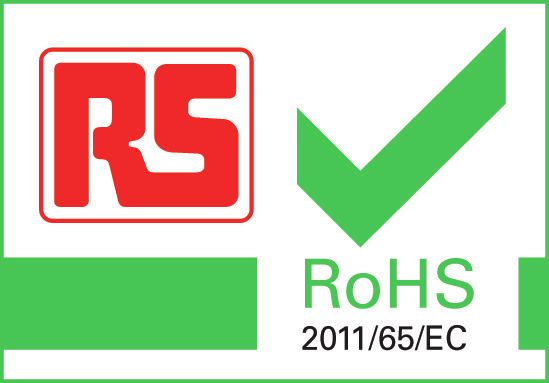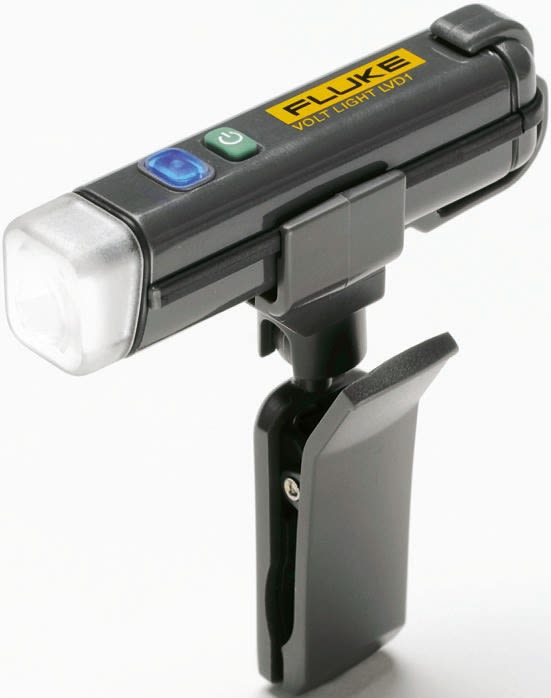Fluke LVD1A Non Contact Voltage Detector
- RS Stock No.:
- 8732364
- Mfr. Prt No.:
- LVD1A
- Brand:
- Fluke

Technical Reference
Legislation and Compliance
RoHS Certificate of Compliance


EU Directives 2011/65/EU and 2015/863 restrict the use of the 10 substances below in the manufacture of specified types of electrical equipment.
Whilst this restriction does not legally apply to components, it is recognised that component “compliance” is relevant to many customers.
RS definition of RoHS Compliance:
- The product does not contain any of the restricted substances in concentrations and applications banned by the Directive,
- and for components, the product is capable of being worked on at the higher temperatures required by lead–free soldering
The restricted substances and maximum allowed concentrations in the homogenous material are, by weight:
| Substance | Concentration |
| Lead | 0.1% |
| Mercury | 0.1% |
| PBB (Polybrominated Biphenyls) | 0.1% |
| PBDE ( Polybrominated Diphenyl Ethers) | 0.1% |
| Hexavalent Chromium | 0.1% |
| Cadmium | 0.01% |
| DEHP (Bis (2-Ethylhexl) phthalate) | 0.1% |
| BBP (Benzyl butyl phthalate) | 0.1% |
| DBP (Dibutyl phthalate) | 0.1% |
| DIBP (Diisobutyl phthalate) | 0.1% |
The supplier of the item listed below has informed RS Components that the product is "RoHS Compliant".
RS Components has taken all reasonable steps to confirm this statement. Information relates only to products sold on or after the date of this certificate.
| RS stock number | 8732364 |
| Product description | Fluke LVD1A Non Contact Voltage Detector |
| Manufacturer / Brand | Fluke |
| Manufacturer part number | LVD1A |
RS Components Ltd, Birchington Road, Corby, Northants, NN17 9RS, UK
Statement of Conformity

This statement confirms that the product detailed below complies with the specifications currently published in the RS media and has been subject to the strict quality conditions imposed by RS Components’ internal management systems. Furthermore and where applicable, it confirms that all relevant semiconductor devices have been handled and packed under conditions that meet the administrative and technical requirements of ANSI/ESD S20.20 and EN61340-5-1 electrostatics control standards.
| RS stock number | 8732364 |
| Product description | Fluke LVD1A Non Contact Voltage Detector |
| Manufacturer / Brand | Fluke |
| Manufacturer part number | LVD1A |
The foregoing information relates to product sold on, or after, the date shown below.
RS COMPONENTS
| Date | Dec 22, 2024 |
RS Components Pte Ltd Robinson Road, P.O. Box 1582, Singapore 903132
Country of Origin: CN
Product Details
Fluke LVD1A Volt Light
LED flashlight and non-contact voltage detector combined, Fluke presents the neat and compact Volt Light. When AC voltage has been detected the tester will glow blue, when the source has been detected the tester will glow red. Detected voltage and blue glow is based on voltages from 40 V AC to 300 V AC, 1 - 5" away from the source. Also featured is an ultra-bright white LED which produces up to 100,000 hours of bulb life for those darker environments, and a versatile clip for securing light to a wide variety of items such as hats, panels or pockets.
Features and Benefits:
• Blue indicator when close
• Red indicator when source located
• 0 °C → +50 °C operating temperature
• Versatile clip and design
• Ultra-bright LED light
• 1 x AAA battery included
Frequently asked questions:
What is a non-contact voltage tester used for?
Voltage testers or detectors are used to check the flow of current through a circuit. They can be used to check safety, or to ensure equipment is functioning correctly. They can also test for the current strength, whether the circuit is grounded correctly or to ensure no current is flowing at all so that work can be begin on the circuit.
How do non-contact voltage testers work?
Also known as a voltage detector, voltage tester pens, sensors or test pens. They allow the user to test electrical conductors without touching them. Non-contact testers are the safest and easiest way to detect electric fields or voltage. Voltage testers utilise what is called capacitive coupling, the user holding the instrument provides a ground reference. The tester then detects changing electric field around the object or objects conducting an AC current. (Alternating current) Simply put, the user and the tester pen when near the electrical conductor will cause a small current to flow through the tester from the source, this is how it detects AC voltage.
Specifications
| Attribute | Value |
| Brand | Fluke |
| Power Source | Battery |
| Minimum Operating Temperature | 0 °C |
| Model Number p | LVD1A |
| Battery Type | AAA |
| Indicator Type | Voltage |
| Maximum Operating Temperature | +50 °C |

